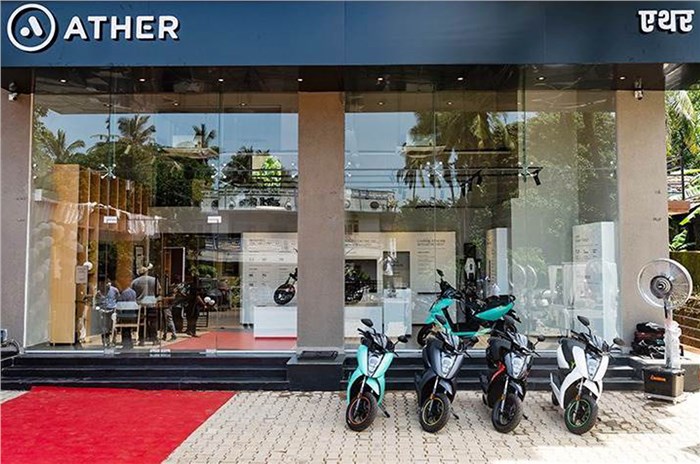Published On Dec 06, 2021 02:50:00 PM
The state has 625 vehicles for every 100 people and is ranked 15th in the world for vehicle density.
Goa is plugging into electric mobility in a big way. The Goa Electric Mobility Promotion Policy, 2021, which was unveiled on December 4, targets 30 percent of annual vehicle registrations to be electric vehicles starting 2025. This follows the state’s first EV policy announcement in February.
- Goa to offer incentives up to Rs 30,000 for two- and three-wheeler buyers
- State aims to convert all new two-wheelers to be EVs by 2030
- To train manpower to be ready for this shift
The Goa government has set up a dedicated EV cell and is offering incentives up to Rs 30,000 for electric two- and three-wheeler buyers by waiving road tax or registration fees. The government is also pushing for all commercial two-wheelers operating in Goa to switch to electric by December 31, 2025.
Interestingly, despite its size, Goa has a vehicle density of 625 vehicles for every 100 people and is ranked 15th in the world in terms of vehicle density. The state currently has a million two-wheelers comprising around 70 percent of the total vehicles.
What’s in the EV Policy?
Goa’s EV policy aims to promote electric mobility in the two-, three- and four-wheeler (passenger and commercial) segments, create 10,000 direct and indirect jobs, encourage start-ups and investment in the sector, promote R&D and create an ecosystem, among others.
In addition to providing subsidy on e-vehicle purchase, the state government aims to develop an EV manufacturing ecosystem by providing capital subsidy of up to 20 percent of Fixed Capital Investment (FCI), or up to Rs 5 crore (whichever is lower); 100 percent net SGST reimbursement on setting up of manufacturing plant and 50 percent stamp duty exemption on purchase of land.
Interestingly, Goa, which has a huge two-wheeler population, aims to convert the same to electric by 2030. The EV policy states that “to ensure the switch happens in a time-bound manner, all two-wheelers involved in commercial activity operating shall switch to complete electric by December 31, 2025. For beyond December 31, 2030, all the two-wheelers sold in the state must be 100 percent electric. However, the existing registered ICE vehicles shall be allowed to operate until their end of life.”
Charging station at every 3km
To ensure ease of EV charging, the policy aims to have a charging station every 3km, for which the Goa government, through the Department of New and Renewable Energy, will provide concessional locations for charging stations at bare minimum lease rentals. These concessional locations shall be carved out from existing public parking zones offering easy entry and exit. Installation of the first 50 charging stations is expected to happen within three months from the notification of policy at selected Kadamba Transport Corporation (KTCL) bus depots, international airports and government complexes.
To train requisite EV ecosystem-related manpower, skill development courses in EV maintenance and component assembly will be started in Industrial Training Institutes (ITI) and Polytechnics. A stipend of up to 50 percent of the cost of course fee, subject to a limit of Rs 10,000 per year per student, in all skill development and re-skilling courses affiliated to Board of Technical Education and State Council for Vocational Training will be offered.
Recognising the potential of EV sales in Goa, Ather Energy set up its first dealership in Goa, in association with Eveer Auto in September.
Sohinder Gill, director general, Society of Manufacturers of Electric Vehicles (SMEV), said, “The recommendations and views shared by government representatives are encouraging, which will further strengthen the industry’s confidence. Additionally, we welcome the Goa EV policy – which has laid down a clear target of conversion of ICE two-wheelers to electric by 2030. However, we believe that limiting the subsidy to only 3,150 EVs may not be enough to accelerate the adoption. The state that has over a million ICE vehicles on the road may need to relook at the numbers to be supported under the scheme, so that more citizens can avail the benefit and shift to electric.”
What do you think about Goa’s new EV policy? Let us know in the comments section below.
Also see:
Indian Oil, BPCL to set up 17,000 EV charging points at their fuel stations
Delhi bans entry of petrol, diesel vehicles in bid to curb pollution
Electric vehicles to get upto Rs 2.75 lakh incentive in Maharashtra
Copyright (c) Autocar Professional. All rights reserved.

